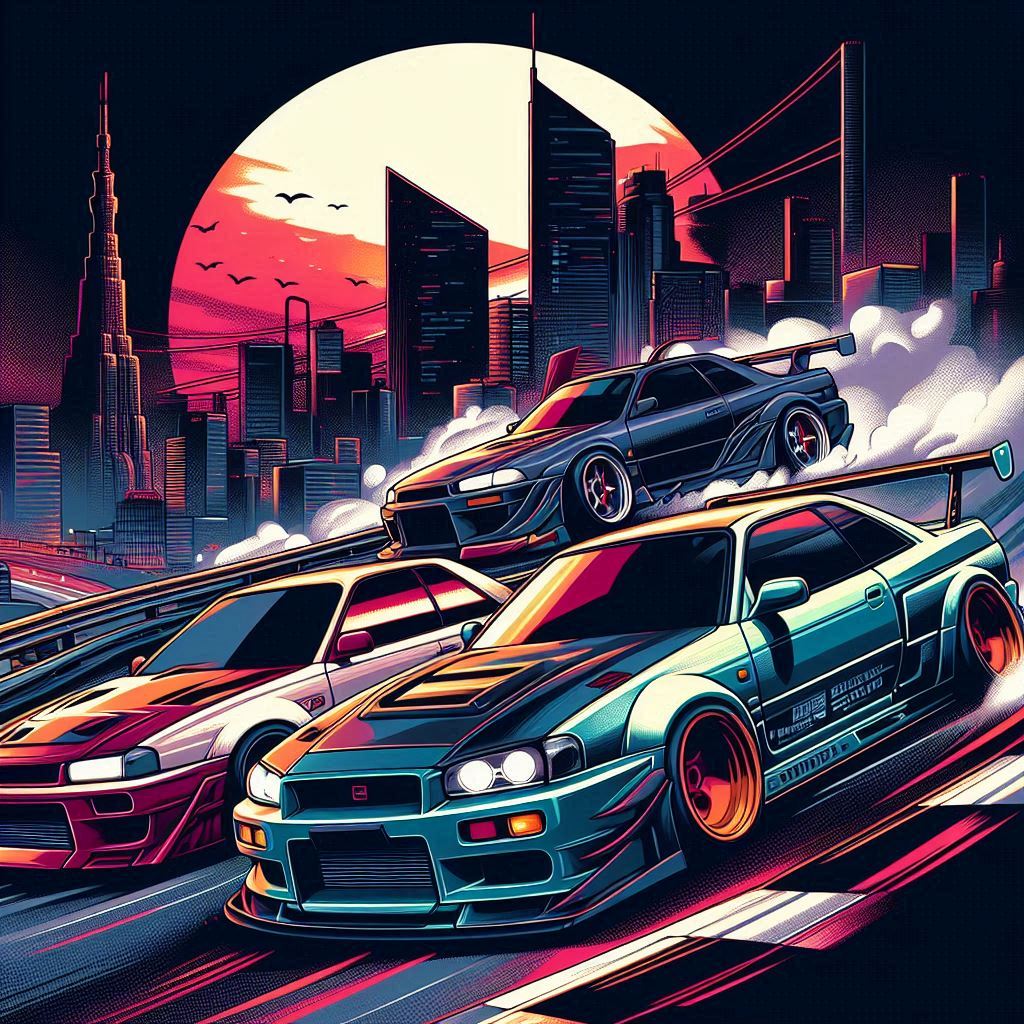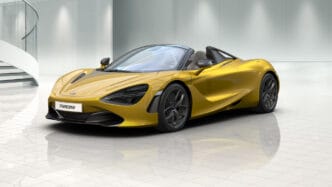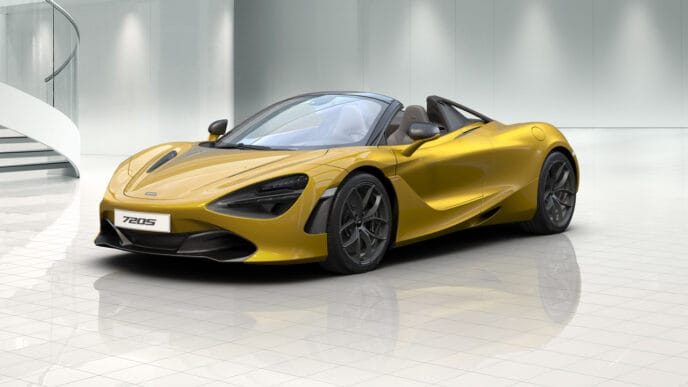In the 1990s, Japan emerged as a global epicenter for automotive culture, giving rise to an underground racing and car scene that captivated enthusiasts both locally and internationally. This vibrant subculture was marked by a unique blend of speed, style, and a strong sense of community, all set against the backdrop of Japan’s socio-economic landscape. It was characterized not only by the thrilling races but also by iconic vehicles and influential figures who defined the culture.
Cultural Context
The 1990s were a transformative period for Japan. Following the economic bubble burst in the early part of the decade, youth culture flourished as a form of escapism. Car culture became synonymous with freedom, rebellion, and a way to assert individuality in an increasingly homogeneous society. For many young people, cars were not just modes of transportation; they were extensions of their personalities.
The iconic Nissan Skyline GT-R, Toyota Supra, Mazda RX-7, and Honda Civic became symbols of this era, each representing a distinct philosophy of speed and style. These vehicles were often modified for performance and aesthetics, making them integral to the burgeoning street racing scene.
The Racing Scene
Street racing in Japan evolved into a complex subculture characterized by clandestine gatherings, fierce rivalries, and adrenaline-fueled competitions. It wasn’t just about speed; it was a test of skill, car performance, and reputation.
Touge Racing
One of the most popular forms of racing was touge racing, which took place on the winding mountain roads outside urban areas. Racers would challenge each other in high-stakes races, often at night to avoid police scrutiny. The touge scene was heavily influenced by Japan’s mountainous terrain, providing both a thrilling racing environment and a natural arena for showcasing driving prowess.
Driving techniques honed in these races emphasized precision, control, and an intuitive understanding of the car’s capabilities. The skill involved was highly respected, and many drivers gained notoriety within the community for their prowess on these twisty roads.
The Role of Drift
While touge racing was focused on speed, the drift scene began to gain traction as well. Drifting involves intentionally oversteering the car, causing it to lose traction while maintaining control. The art of drifting became popularized in the late ’90s, particularly through films and media that showcased its visually stunning nature. The D1 Grand Prix, established in the early 2000s, can trace its roots back to this underground movement.
Iconic Cars of the 1990s
1. Nissan Skyline GT-R (R32 and R33)
The Nissan Skyline GT-R, especially the R32, became a symbol of the underground racing scene. Known as the “Godzilla” for its ferocious performance, the R32 was equipped with a 2.6-liter inline-six engine and advanced all-wheel-drive technology (ATTESA). Its blend of power, agility, and tuning potential made it a favorite among racers. The R33 continued this legacy, improving on stability and comfort while maintaining a strong performance reputation.
2. Toyota Supra (A80)
The fourth-generation Toyota Supra, known as the A80, was released in the early ’90s and became an icon for its incredible tuning potential. Its 3.0-liter inline-six engine produced over 300 horsepower, and with modifications, it could reach impressive power figures. The car’s sleek design and performance made it a staple in street racing circles and later in popular media.
3. Mazda RX-7 (FC and FD)
The RX-7, particularly the FD model introduced in 1992, was celebrated for its lightweight construction and rotary engine. Its 1.3-liter twin-rotor engine delivered a unique powerband, providing a thrilling driving experience. The RX-7’s agility and tuning potential attracted many enthusiasts, making it a popular choice for both touge racing and drifting.
4. Honda Civic (EG and EK)
The Honda Civic gained popularity as a lightweight, affordable, and easily modifiable platform. The EG and EK models became canvases for modifications, from engine swaps to body kits. The Civic’s strong aftermarket support allowed many young drivers to personalize their cars, making it a staple in the street racing scene.
5. Subaru Impreza WRX
Launched in the mid-90s, the Subaru Impreza WRX quickly gained a reputation for its performance and rally heritage. Its turbocharged flat-four engine and all-wheel-drive system made it a formidable competitor on the streets. The WRX’s blend of practicality and performance resonated with many racing enthusiasts.
Community and Identity
The underground racing scene fostered a strong sense of community among its participants. Car clubs and crews formed, often distinguished by their unique styles, emblems, and livery. Members shared a passion for cars, racing, and modification, leading to a culture of camaraderie and competition.
Events were often organized through word-of-mouth or online forums, where enthusiasts coordinated meets and races. These gatherings were not only about racing; they included car shows, music, and socializing, creating a festival-like atmosphere. The culture thrived on the thrill of competition and the bond formed over shared interests.
Prominent Figures in the Scene
1. Keiichi Tsuchiya
Often referred to as the “Drift King,” Keiichi Tsuchiya was pivotal in popularizing drifting both in Japan and worldwide. His incredible driving skills, combined with a deep understanding of car dynamics, made him a legend. Tsuchiya participated in numerous touge races and later became a figure in motorsport through events like D1 Grand Prix. His influence extended beyond racing as he featured in the Initial D manga, connecting the underground scene to mainstream culture.
2. Kazuhiro Tanaka (K.T.)
K.T. was a well-known figure in the touge racing community, famous for his driving skills in a modified Nissan Silvia S13. His daring challenges against other drivers and ability to navigate the mountainous roads of Japan earned him a legendary status among street racers. K.T.’s rivalry with other top drivers highlighted the competitive nature of the scene.
3. Masahiro Sasaki
A prominent figure in the drift scene, Sasaki was known for his mastery of the Nissan 240SX (Silvia). His innovative techniques and ability to drift through tight corners gained him a reputation as one of the top drivers in the underground circuit. Sasaki’s contributions to drifting technique influenced many who followed in his footsteps.
4. The “Hashiriya”
While not a single person, the Hashiriya (meaning “street racers”) were a collective of underground racers who embodied the spirit of the scene. These crews often consisted of friends and fellow enthusiasts who would gather to race, modify cars, and share knowledge. They became a vital part of the community, fostering the bond between members and creating a sense of identity within the racing culture.
Media Influence
As the underground scene grew, so did its representation in various media. Initial D, a manga series that began serialization in 1995, depicted the life of street racers in the mountains of Gunma Prefecture. The series captured the essence of touge racing and became a cultural phenomenon, introducing characters inspired by real-life figures and cars. Its success played a significant role in popularizing car culture beyond Japan, inspiring a new generation of enthusiasts worldwide.
Conclusion
The underground racing and car scene of 1990s Japan was a rich tapestry of rebellion, community, and passion. Iconic vehicles like the Nissan Skyline GT-R, Toyota Supra, and Mazda RX-7 became symbols of an era defined by speed, style, and individuality. The influence of key figures such as Keiichi Tsuchiya and the Hashiriya crew shaped the landscape of racing culture, leaving a lasting legacy that resonates with car enthusiasts today. This vibrant subculture not only defined a generation but also paved the way for the global appreciation of Japanese car culture.















